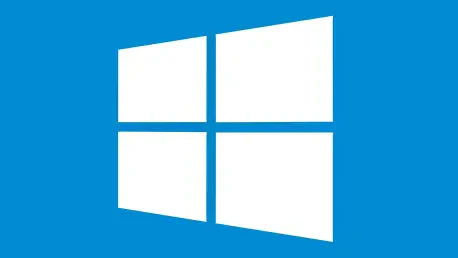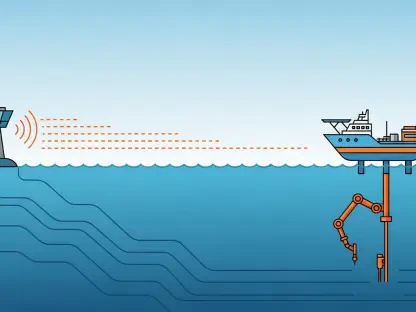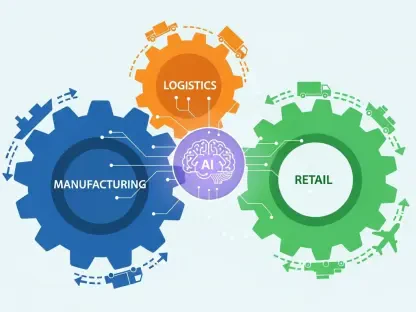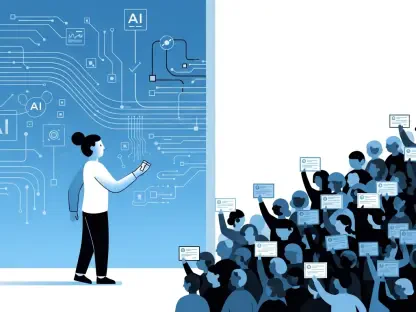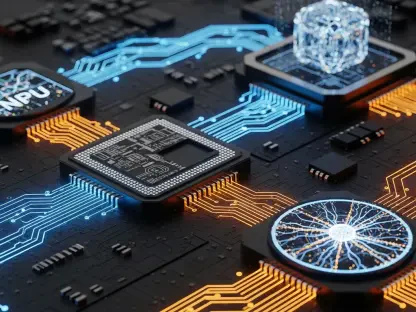Artificial Intelligence (AI) is no longer a distant novelty but a transformative force reshaping the way users interact with their Windows PCs. In 2025, AI is expected to permeate various facets of technology, promising to elevate standard computing operations to unprecedented levels of efficiency and automation. One can envision a scenario where day-to-day digital tasks are executed with seamless precision, no longer shackled by manual intervention. Imagine commanding your PC to open applications, multitask, and manage files with minimal effort, all executed through AI agents. This conceptual leap originates from initiatives like those unveiled at Microsoft’s Build developer conference, pointing towards a future where AI doesn’t just assist but autonomously operates software to help users achieve more within shorter timespans. At the core of this impending transformation is the Model Context Protocol (MCP), envisioned to empower AI applications with the capacity to integrate and manipulate a range of apps and web services like never before.
Seamless Workflow Efficiency
The potential for turbocharging workflow efficiency with AI-integrated functionalities on Windows is monumental. AI agents are poised to reduce user interaction with repetitive tasks by turning commands like “Open Photoshop and make these changes” or “Create a playlist on Spotify” into routine automated functions. Such convenience represents a paradigm shift from current practices where user input is vital to complete these operations. Instead, AI stands in as the user’s proxy, executing digital commands with precision. This innovation signifies a critical evolution in user-application interaction, transforming the user experience from a series of deliberate, time-consuming actions to an effortless dialogue with one’s PC. Microsoft’s vision is forging a path where every Windows user can benefit from this symbiotic relationship with AI, promising a profound cut in the time and energy spent on mundane tasks, ultimately liberating users to focus on more creative or complex endeavors.
At the heart of this evolution is a deeper integration of AI at the system level, moving beyond the superficial layers seen in earlier iterations of intelligent systems. Microsoft is exploiting the potential of AI not just as an auxiliary tool available on the side, but as a core component of the Windows ecosystem. This approach marks the democratization of AI capabilities, previously limited to high-end devices with dedicated neural processing units (NPUs), now extending to virtually all Windows platforms. This inclusivity opens the door to AI utilization regardless of the hardware sophistication of the device, relying instead on diverse computing architectures like traditional GPUs and CPUs. By infusing AI into the very fabric of Windows operations, the transformation seeks to make every application not only smarter but also easier to use for audiences across the spectrum of tech-savviness.
Privacy and Security Considerations
In the landscape of AI integration within Windows, privacy and security emerge as cardinal considerations. Microsoft, acutely aware of the anxieties surrounding AI’s broad applications, has meticulously outlined strategies to safeguard user data and maintain trust. This calculated approach is evident in the methodical implementation of permission-based interactions, requiring AI applications to seek explicit user consent before interfacing with or controlling other apps on the device. This consent model empowers users, enabling them to tailor AI interactions according to personal preferences and security priorities. Additionally, privacy settings allow toggling features on or off per application, granting users granular control over what aspects of their digital environment AI agents can access.
The efforts do not stop at merely user permissions; they extend into the engineering of AI applications themselves. Microsoft promotes the involvement of developers in creating secure AI ecosystems, suggesting the integration of Model Context Protocol servers within conventional desktop applications. This design choice morphs applications into gateways that connect AI functionalities seamlessly with specific tasks, moving past rudimentary interactions to more advanced communication lines. Such a framework facilitates AI’s capacity to issue concise command instructions, bypassing the traditional, often cumbersome methods of simulated user actions like drag-and-drop or mouse clicks. This sophisticated mechanism underpins a smoother, more secure interaction paradigm where AI is not an invasive force but an invited ally, tasked with bolstering, not breaching, the sanctity of user experience.
Local AI Processing and Developer Integration
The thrust towards local AI processing is a natural progression in Microsoft’s strategic roadmap aimed at optimizing Windows AI execution. This initiative is a direct response to criticisms aimed at past AI strategies that were too reliant on cloud-based solutions. By localizing AI processes, Microsoft ensures that functionalities are more accessible to all users, irrespective of their internet connectivity or concerns over data privacy. This move towards decentralizing AI functionality resonates strongly with privacy advocates who demand stringent controls over data dissemination. Windows ML, the product of this vision, epitomizes a unified runtime capable of catering to a wide array of hardware configurations, from high-end machines to modest PCs, thus making AI an egalitarian tool rather than a niche elite service.
For developers, embracing local AI processing opens new avenues for creating applications that leverage AI without bottlenecks imposed by data transmission and cloud dependencies. These innovations simplify workflows across applications, fostering an environment that encourages creativity and experimentation with AI-facilitated features. Moreover, the introduction of concepts like the Windows AI Foundry amplifies this reach, announcing an evolution of the Windows Copilot Runtime aimed at community engagement. This adaptation facilitates the transference of sophisticated AI capabilities, previously harnessed only by high-performance devices, to a broader set of users and machines. With this toolkit, developers can harness AI to build bridges across various Windows applications, assembling a more cohesive and intelligent Windows ecosystem driven by collective innovation and capability sharing.
Broadening Accessibility
An essential aspect of Microsoft’s AI ambitions involves making previously exclusive AI functionalities universally available across Windows platforms. This vision expands to ensure that even those with modest computing resources can engage with and benefit from AI-driven tools. With the advent of adaptive systems like the Windows AI Foundry, Microsoft advocates for extensive compatibility and utility beyond the flagship products usually highlighted in high-performance contexts. This strategy not only broadens the reach of Microsoft’s AI initiatives but also motivates a wider array of developers to experiment with and implement artificial intelligence into their legacy software, ultimately fostering a richer and more varied technological landscape.
In bolstering accessibility, Microsoft’s strategy also incorporates advanced educational outreach and developer support systems. By prioritizing integrated learning platforms and offering extensive documentation, Microsoft ensures that AI technologies aren’t solely in the hands of specialists but also those willing to explore and expand their capabilities. This inclusivity stands to cultivate a vibrant community eager to innovate and integrate AI across a multitude of applications, thus propelling Windows PCs further into the realm of intelligent, responsive technology. By effectively lowering the barriers to entry into AI implementation, Microsoft denotes a clear commitment to fostering an all-encompassing technological ecosystem.
Path to a Smarter Windows Experience
Artificial Intelligence (AI) has evolved from a futuristic concept to an integral component reshaping the interaction between users and their Windows PCs. In 2025, AI is expected to infuse numerous aspects of technology, advancing regular computing tasks to new heights of efficiency and automation. Envision a scenario where everyday digital responsibilities are carried out with flawless accuracy, free from the need for manual input. Picture yourself commanding your PC to open software, multitask, and manage files effortlessly, all with the help of AI agents. This significant progression stems from efforts showcased at events like Microsoft’s Build developer conference. It signals a future where AI doesn’t merely aid but independently runs software, enabling users to accomplish more in less time. Central to this upcoming change is the Model Context Protocol (MCP), which aims to empower AI applications to integrate and manipulate a variety of apps and web services in unprecedented ways, pushing the boundaries of technological capabilities.
